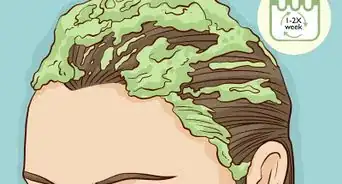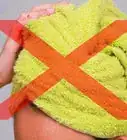This article was co-authored by Christine George. Christine George is a Master Hairstylist, Colorist, and Owner of Luxe Parlour, a premier boutique salon based in the Los Angeles, California area. Christine has over 23 years of hair styling and coloring experience. She specializes in customized haircuts, premium color services, balayage expertise, classic highlights, and color correction. She received her cosmetology degree from the Newberry School of Beauty.
wikiHow marks an article as reader-approved once it receives enough positive feedback. In this case, 86% of readers who voted found the article helpful, earning it our reader-approved status.
This article has been viewed 227,097 times.
Taking care of your curly hair can be a challenge, especially if it gets dry or damaged! Regular conditioning treatments, natural oil remedies, and deep conditioning can help restore your curls to their natural glory and prevent further damage.
Steps
Using Regular Conditioner
-
1Choose a conditioner of your choice. Make sure that you use shampoo and conditioner that you like. Look at the label and make sure it’s formulated for curly hair.[1]
- Light formulas with mild moisturizers are best for looser curls and oily hair. Thicker formulas are better for tighter curls and drier hair.
- Tight curls or kinks will usually need a cream conditioner.
- Dry curls will need a conditioner with heavy moisturizers or oils.
- For damaged curls, buy a conditioner especially for damaged hair.
-
2Apply the conditioner. Curly hair tends to see the most dryness and damage at the ends since the ends are the oldest part of the hair. Focus on conditioning the ends and then work your way up towards the roots. Use more on the ends, and very little at the roots--this will help maintain your hair’s natural shape by preventing oily buildup at the roots.[2]Advertisement
-
3Let the conditioner sit for five to twenty minutes. Keep the conditioner in your hair for at least five minutes. You can increase the time to fifteen or twenty minutes if your hair is badly damaged or unusually dry.
-
4Rinse your hair with cool water. Rinse out your hair thoroughly, using cool water to lock in your hair’s natural oils and smooth your hair by sealing the cuticle. Run your fingers or a wide-tooth comb through your hair to detangle it while rinsing.
- Using a wide-tooth comb is particularly useful for tightly coiled textured hair.
-
5Use a leave-in product (optional). Many companies make leave-in conditioners or hair masks, especially for curly hair. These can give your hair additional protection and make managing your curly hair a little easier. Apply according to the package directions, leave in, and style your hair as usual.[3]
-
6Let your hair air dry. Air drying is the best way to prevent damage and frizz to curly hair. If you generally rely on blow drying to help style your hair, try other methods to curl or straighten your hair.
-
7Turn heat-styling tools to their lowest setting. Too much heat can damage your curly hair! If you use a curler, straightener, or hot comb, set it to the lowest temperature possible. If you use a curler, get a wide diameter one to prevent overusing it on your hair.[4]
Conditioning with Oils
-
1Choose the right oil for your hair. Oils are a natural way to condition your curly hair without using chemicals or risking product buildup. What kind of oil is best for you depends on your hair texture and your own preferences.[5]
- Jojoba oil is an extra-light oil that feels less greasy than other options. It’s good for all curly hair but is especially useful for light curls.
- Coconut oil is excellent at penetrating hair to restore strength and is ideal for African-American hair. Some people may not like the scent of coconut oil.
-
2Heat up your oil with warm water. Warm oil is easier to use on hair since it’s usually in liquid form. Don’t heat it up in the microwave or on a stovetop--this can cause burns! Instead, put the oil container in a bowl of warm water until it feels warm on the outside.[6]
- It’s extra necessary to heat coconut oil until it melts, because coconut oil is solid at room temperature. However, if the air is warm enough, it may melt on its own.
-
3Protect your clothing. Oil can permanently mark clothes, so be sure to put on a hairdresser’s cape, apron, or rain poncho over your clothes before beginning.
-
4Rub the oil into your hair from the ends up. Use about 1 ounce (30 mL) to start, and increase if necessary. Start at the bottom of your hair and work upwards, rubbing the oil into your hair while using your fingers or a wide-tooth comb to detangle. Be careful not to spread oil directly on your scalp--this can clog your pores![7]
-
5Let the oil saturate your hair for five to twenty minutes. Allowing your hair to absorb the oil helps it retain nutrients and repair damage. Leave the oil in for about five minutes. If your hair is severely damaged, you can leave it in for up to twenty minutes.
-
6Rinse your hair with cold water. Cold water helps lock in oil treatments. Rinsing out oil may take much longer than rinsing out regular conditioner, so make sure you get all the oil out! Leaving your hair saturated in oil will make it appear greasy. Let your hair air-dry afterwards.[8]
Using Deep Conditioning Treatments
-
1Choose a deep conditioner. Deep conditioner helps tame extra-curly or frizzy hair. It’s especially good for treating damaged hair! Make sure your deep conditioner is made for curly hair--the best deep conditioners for your hair will have ingredients like shea butter, avocado oil, keratin, argan oil, and coconut oil. You can also buy deep conditioners with proteins to treat badly damaged hair--look for ingredients like hydrolyzed collagen, Panthenol, soybean protein, or glycoprotein.[9]
-
2Apply according to product directions. Work from the ends to the roots just like you do with regular conditioner.
-
3Apply heat (optional). This is an optional step, but heat will open up the cuticles of your hair, allowing the conditioner to penetrate more deeply. Using blow dryers on your curly hair can damage it, so instead wet three or four hand towels with cold water, wring them out, and microwave until hot, about 1–2 minutes. Wrap the towels around your head and leave on for 5–10 minutes.
-
4Rinse your hair with cool water. Rinse your hair thoroughly with cool water to remove the conditioner. You can detangle your hair with your fingers or with a wide-tooth comb.[10]
-
5Wash your hair. Wash your hair as usual, with shampoo made for curly hair. Be sure to wash your hair in a downward motion before rinsing--this prevents tangles! You can use a regular conditioner afterward to help lock in the deep conditioning, but it isn't required.[11]
-
6Section your hair. If you have long hair, divide it into 6–8 sections for more convenient handling. Detangle your hair with your fingers or a wide-toothed comb if necessary, but be gentle since wet hair is more vulnerable to damage.
-
7Apply any additional products. If you plan to use rollers, hair styling products, or a leave-in hair mask, go ahead and put them in now before letting your hair air-dry.
-
8Repeat regularly! Deep conditioners aren't made for everyday use, but you should be using them regularly. If your hair is very damaged, deep condition every week. If it's not, once a month is fine!
Expert Q&A
-
QuestionHow do you choose a hair oil for curly hair?
 Christine GeorgeChristine George is a Master Hairstylist, Colorist, and Owner of Luxe Parlour, a premier boutique salon based in the Los Angeles, California area. Christine has over 23 years of hair styling and coloring experience. She specializes in customized haircuts, premium color services, balayage expertise, classic highlights, and color correction. She received her cosmetology degree from the Newberry School of Beauty.
Christine GeorgeChristine George is a Master Hairstylist, Colorist, and Owner of Luxe Parlour, a premier boutique salon based in the Los Angeles, California area. Christine has over 23 years of hair styling and coloring experience. She specializes in customized haircuts, premium color services, balayage expertise, classic highlights, and color correction. She received her cosmetology degree from the Newberry School of Beauty.
Master Hair Stylist & Colorist Olive oil or grapeseed oil are medium-thickness oils good for medium to tight curls. Besides softening your hair and providing shine, olive oil can help with scalp itchiness and dandruff.
Olive oil or grapeseed oil are medium-thickness oils good for medium to tight curls. Besides softening your hair and providing shine, olive oil can help with scalp itchiness and dandruff. -
QuestionIs cold water good for curly hair?
 Laura MartinLaura Martin is a Licensed Cosmetologist in Georgia. She has been a hair stylist since 2007 and a cosmetology teacher since 2013.
Laura MartinLaura Martin is a Licensed Cosmetologist in Georgia. She has been a hair stylist since 2007 and a cosmetology teacher since 2013.
Licensed Cosmetologist Cold water is less likely to cause frizz than warm water. This is because it doesn't open the cuticle as far.
Cold water is less likely to cause frizz than warm water. This is because it doesn't open the cuticle as far. -
QuestionHow do I keep my curls sleek once my hair dries?
 Ashley AdamsAshley Adams is a Licensed Cosmetologist and Hair Stylist in Illinois. She completed her Cosmetology education at John Amico School of Hair Design in 2016.
Ashley AdamsAshley Adams is a Licensed Cosmetologist and Hair Stylist in Illinois. She completed her Cosmetology education at John Amico School of Hair Design in 2016.
Professional Hair Stylist Experiment with different hair products to see what works for you. You may want to try a different styling method, too.
Experiment with different hair products to see what works for you. You may want to try a different styling method, too.
Warnings
- If you are using essential oils, dilute them first with a thinner oil (not water) before using them on any part of your body - whether hair or skin.⧼thumbs_response⧽
- Sun can damage hair. Look for a conditioner that includes sunscreen, or wear a wide-brimmed hat or scarf when in bright sun.⧼thumbs_response⧽
- Don’t brush curly hair. This can cause breakage and ruin the natural shape of your curls.⧼thumbs_response⧽
References
- ↑ http://www.allure.com/gallery/the-ten-commandments-of-curly-hair
- ↑ https://www.naturallycurly.com/topics/view/conditioning-curly-hair/
- ↑ http://www.allure.com/gallery/the-ten-commandments-of-curly-hair
- ↑ http://www.allure.com/gallery/the-ten-commandments-of-curly-hair
- ↑ https://wellnessmama.com/beauty/curly-hair-care/
- ↑ https://wellnessmama.com/beauty/curly-hair-care/
- ↑ https://wellnessmama.com/beauty/curly-hair-care/
- ↑ https://wellnessmama.com/beauty/curly-hair-care/
- ↑ https://www.naturallycurly.com/curlreading/kinky-hair-type-4a/top-ten-natural-ingredients-for-your-hair/


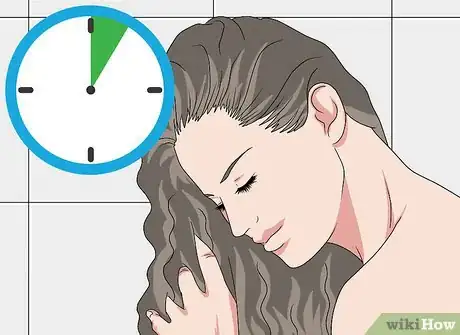






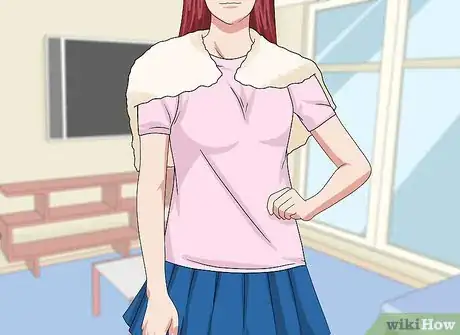


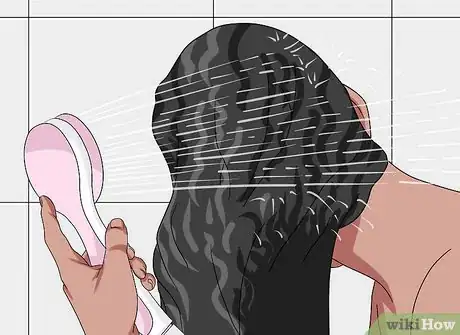
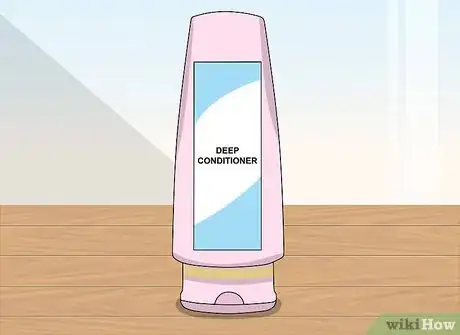



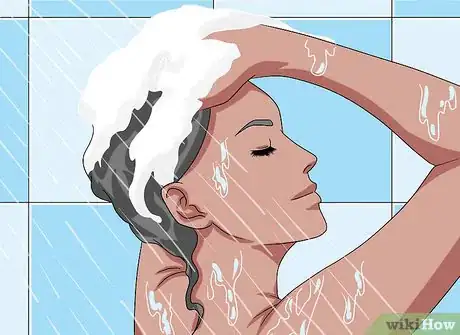

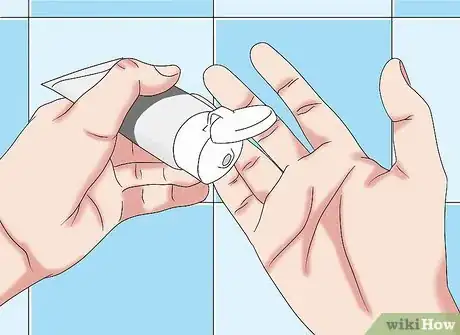

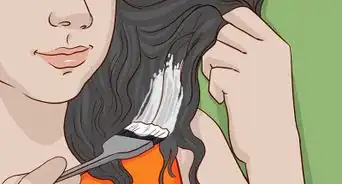


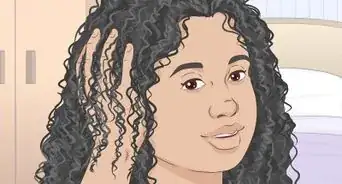
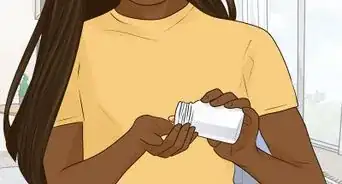
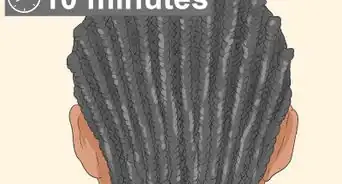



-Step-13.webp)
